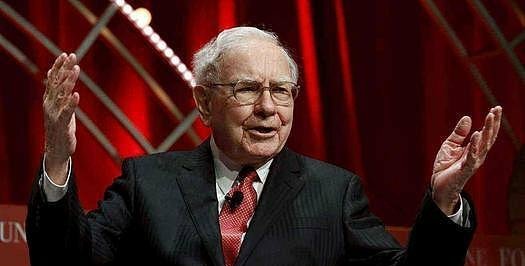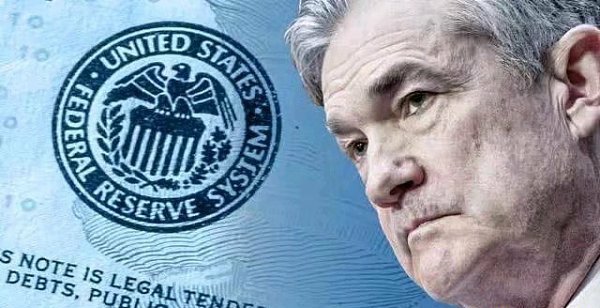In many respects, 2020 is a year full of magic, and so is the investment industry. Bitcoin's plunge at the beginning of the year and its surge at the end of the year also surprised many investors. When the global capital market plummeted in early March 2020, Bitcoin fell sharply from more than $7,000 to below $4,000 within two days. By the end of the year, Bitcoin not only broke the 2017 high, but also set a new high of $24,000. And in the eyes of many American investors, this upward momentum has just begun. In the first few days of January 2021, Bitcoin once again rose by more than 10%, and exceeded $340 million last Sunday, a new high. It can be said that Bitcoin has attracted the attention of a large number of investors in recent times. The author has also received many inquiries from friends, is it possible to buy Bitcoin now? For most mainstream institutional and individual investors, there was little attention and understanding of Bitcoin before. Here, the author briefly analyzes the logic of this Bitcoin rise and investment risks and strategies.

1. Bitcoin generated by the geek circle
Since Satoshi Nakamoto proposed the concept of Bitcoin in 2008, Bitcoin has only a short history of less than 12 years. Bitcoin can refer to both an Internet-based and virtual ledger system, as well as the unique accounting symbols in this ledger system, and the latter is the Bitcoin that we generally understand. According to the most original design, the output of Bitcoin is generally reduced every four years with each block. Therefore, it can be estimated that the total output of Bitcoin will reach the limit around 2040, with a total of about 21 million. Bitcoin has gradually spread to the general public from the hobbies and products of the geek circle at the beginning, but it has basically not entered the mainstream vision before 2013. In October 2013, the U.S. FBI blocked the online anonymous black market trading market Silk Road, arrested its founder Ross Ubliran, and confiscated 144,000 bitcoins. This incident was widely reported by the media, which greatly increased the popularity of Bitcoin.
In the subsequent auction of the confiscated Bitcoin by the US government, many well-known traditional investors participated in the auction. For example, Tim Draper, a well-known American venture capitalist and founder of DFJ Fund, bought it for less than US$20 million in 2014. Nearly 32,000 Bitcoins have further expanded Bitcoin's influence among mainstream investors. However, the price of Bitcoin often soars and plummets, causing mainstream investors to stay away from it. Powerful figures in the traditional financial world, represented by the stock god Buffett and JPMorgan Chase CEO Dimon, have a long-term negative view of Bitcoin: Bitcoin lacks practical use. Value does not bring cash flow returns, and the market price fluctuates too much, and the investment risk is too high.

This situation began to change after entering the new crown epidemic in 2020.
As Buffett and many financial experts have analyzed and believed, Bitcoin itself does not bring cash flow returns, in this sense it is more similar to gold. Therefore, the rise or fall of the price of Bitcoin is mainly determined by investors' expectations of its price in the market, and such expectations are inseparable from the outlook of the global macroeconomic environment. When the supply of legal currency in the financial system increases, it means that the legal currency depreciates, and the prices of assets with limited supply such as gold and Bitcoin increase accordingly. The global pandemic of the new crown virus has brought about economic and social crises faced by various countries. Under the impact of the new crown crisis, central banks of various countries have to use the old methods to increase the stimulus of the money supply to deal with economic crises such as unemployment and bankruptcy caused by the epidemic. Data shows that as of November 2020, the dollar money supply has exceeded 19 trillion US dollars, while at the beginning of 2020 it was only 15 trillion US dollars, which means that nearly one-fifth of the US dollars will be printed in 2020.
When Satoshi Nakamoto designed Bitcoin in 2008, one of the main starting points was the problems caused by the centralization defects in the mainstream financial system, including the abuse of money printing power. This view has been further strengthened with the release of water by the central bank, allowing many investors to change their thinking, thus creating conditions for Bitcoin to gain the favor of mainstream investors. With the expectation that global central banks headed by the Federal Reserve will increase the money supply, investors are looking for assets that can avoid the risk of depreciation. This is the main reason why the price of gold has risen sharply, and some institutional investors are also optimistic about Bitcoin. .

2. U.S. institutional investors enter the market
After Bitcoin experienced a sharp drop in March, many celebrity investors in the United States began to sing more Bitcoin. In May 2020, Paul Tudor Jones, a well-known Wall Street hedge fund manager, announced the allocation of 2% of his personal investment portfolio to Bitcoin. The fund managed by Paul Tudor Jones had a reputation for accurately predicting the 1987 US stock market crash and the bursting of the Japanese bubble in 1990. After that, the US listed company MicroStrategy, the payment company Square, and the Massachusetts Life Insurance Company all publicly announced that they would transfer part of their cash to Bitcoin to deal with the risk of potential dollar depreciation. Square CEO Jack Dorsey is also the founder of Twitter. According to him, Bitcoin held by Square users in November 2020 has increased by 180% from a year ago, and is worth 1.8 billion US dollars. On October 21, 2020, the US payment giant PayPal revealed that it will provide users with the service of buying bitcoin and other cryptocurrencies, which will provide a more convenient channel for US personal consumption users to enter bitcoin.
Since then, there have been more and more mainstream investment institutions and investors who are optimistic about Bitcoin, and some well-known funds such as Guggenheim and SkyBridge have joined the ranks of Bitcoin investors. Traditional financial giants such as JPMorgan Chase have also changed their views. On December 9, 2020, JPMorgan Chase analyst Nikolaos Panigirtzoglou stated in a research report that as more and more institutional investors enter cryptocurrencies, funds are flowing out of gold into Bitcoin , And this trend has just begun. According to JPMorgan Chase's prediction, in the future, financial service companies in the United States, the European Union, Japan and the United Kingdom will allocate at least 1% of their assets to Bitcoin, and Bitcoin demand will reach 600 billion US dollars. Amidst these successive chants, the price of Bitcoin has also risen by leaps and bounds. After breaking through US$10,000 at the end of July 2020, it regained its previous historical high and returned to US$19,000 in December, and then just took a breather and started to soar again. , Hitting a new high of $24,000 on December 20.
The rise in prices has further attracted more media and social attention, and brought more investors to follow up to buy Bitcoin, forming a spiral effect. Even Dario, the founder of the world's largest hedge fund, has recently begun to admit that Bitcoin is gaining an asset investment status similar to gold.

3. Can it replace gold
Looking back at the progress of the Bitcoin market over the past few years, it can be seen that Bitcoin has a short history, and its value and status have yet to be verified. However, there are several consensuses that are beginning to gain recognition:
First of all, as a network system, the Bitcoin network has extremely strong security and stability. At least in the past ten years, the Bitcoin network has not suffered major accidents, including hacker attacks. Of course, centralized exchanges, wallets or other service platforms that provide application services based on the Bitcoin network are often prone to security vulnerabilities, which are risks that investors need to pay attention to.
Secondly, Bitcoin has a certain scarcity value. As for the judgment of this value, it depends on everyone's cognition and preference, and the market pricing partly reflects this value. One of the most common views at present is that Bitcoin has similar characteristics to gold in many aspects: limited supply and scarcity; it can be divided infinitely; it is convenient to carry, so it is a store of value asset.
However, how to value Bitcoin is still a question without a standard answer. The traditional cash flow return model is obviously not applicable to Bitcoin, because holding Bitcoin is not like holding stocks or bonds, which can get interest rates or dividend returns. At present, the more common Bitcoin valuation models in the industry include the Stock-to-Flow model, the network effect model, and the gold replacement model.
The Stock-to-Flow model believes that the ratio of the stock of a commodity to the new output can measure the scarcity of the commodity. This model theory is often used to measure precious metals such as gold and silver. For example, the SF ratio of gold is 62 and the SF ratio of silver is 22. That is, it takes 62 years to produce the gold currently owned by humans and 22 years to silver.
Since Bitcoin is designed to limit its final output, and the output of Bitcoin in each block will be halved every four years, this ensures that Bitcoin is always on a path of rising SF ratio. According to the current daily output of Bitcoin of 900, Bitcoin's SF is 108, far exceeding gold.
If this SF model is established for Bitcoin, it is estimated that the price of Bitcoin will reach USD 1 trillion in 2020, and the price of a single Bitcoin will reach USD 55,000. In contrast, the current market value of gold is US$10 trillion, which is why many people believe that the price of Bitcoin will rise.
Third, Bitcoin, as an alternative asset, has relatively mature investment conditions, including the establishment and improvement of trading markets and various investment products and tools. At present, the United States is at the forefront in this regard and already has fully compliant exchanges, custodians, futures, and tradable products. U.S. cryptocurrency investors can either invest in mining, buy bitcoin directly on exchanges such as CoinBase, or invest in tradable products such as Grayscale Trust in a flexible way.
In contrast, Asia is restricted by the regulatory policies of various countries, and the current service infrastructure for investing in cryptocurrency is relatively backward. For example, several large exchanges are not compliant and cannot directly provide services to Chinese users. However, Singapore and Hong Kong have recently begun to make good progress, including the issuance of compliance trading platform licenses, which will open a compliance channel for Asian institutional investors and high-net-worth individuals to invest in Bitcoin. In November this year, PayPal Finance also submitted an application for a fund management license to the Hong Kong Securities Regulatory Commission, hoping to provide Asian investors with easy channels and services to invest in cryptocurrency after approval.
For professional investment institutions in Asia, especially hedge funds, we also recommend paying close attention to cryptocurrency assets. This is not only because US institutional investors are investing in Bitcoin on a large scale, but the rational allocation of cryptocurrency assets will increase the overall return on the investment portfolio. Many hedge funds in traditional fields are beginning to establish trading teams for encrypted assets, and some funds have a relatively high proportion of the trading scale of encrypted assets in the overall portfolio.

4. Control leverage and invest carefully
The price of Bitcoin is currently hitting a record high and has attracted the attention and interest of many investors, but investors still need to be cautious in investing in Bitcoin. Before investing in Bitcoin, investors should first evaluate their asset allocation and risk appetite. If you are an investor with a relatively large asset scale and can tolerate a certain proportion of high-risk asset allocation, and you want to hedge against potential currency depreciation risks, you can consider holding a certain amount of Bitcoin at an appropriate price level. The allocation of Bitcoin should not exceed 5% of all assets.
In addition, there are some common mistakes in investing in Bitcoin, which we hope investors should avoid.
The most common mistake of the average investor is frequent trading. In our view, frequent trading is only suitable for professional traders, and a good trading strategy is required, otherwise this investment strategy will only cause investors to either miss the bull market rise or lose their principal. This is because the rapid rise in the price of Bitcoin is often concentrated in just a few days or weeks. If these prime times are missed, it is difficult for ordinary investors to get good returns. For example, from September 2019 to December 2020, the price of Bitcoin rose from more than $9,000 to over $24,000, an increase of 160%. If this part of the time is deducted, the price of Bitcoin will be below $9,000 for most of 2020. This means that if you miss the September to December rise, Bitcoin investors will not have high returns for the whole year.
The second is to avoid excessive leverage. Although Bitcoin does not bring cash flow income like stocks, holding Bitcoin mainly relies on price increases to obtain income. If you only use disposable funds to invest, even if there is a short-term price drop, you can still hold it and expect the price to rebound. . However, if excessive leverage is used in the investment process, it may be forced to sell during the time when the price drops, causing a loss of principal. As Bitcoin's price volatility is relatively high and difficult to grasp, the risk of excessive leverage is correspondingly greater.
The biggest difference between Bitcoin and other investment products is that it is completely based on the Internet, and investors need to be responsible for the safety of the Bitcoin they hold. Of course, investors may also choose to host their bitcoins to centralized wallets, exchanges, and financial service platforms. At this time, they need to pay attention to the reliability of the platform itself. There is no industry standard for judging the reliability of these platforms, so this is also a risk. However, over time, as more and more traditional institutions join, these problems are expected to be resolved, and the value of Bitcoin will also increase even more.
Posted Using LeoFinance Beta